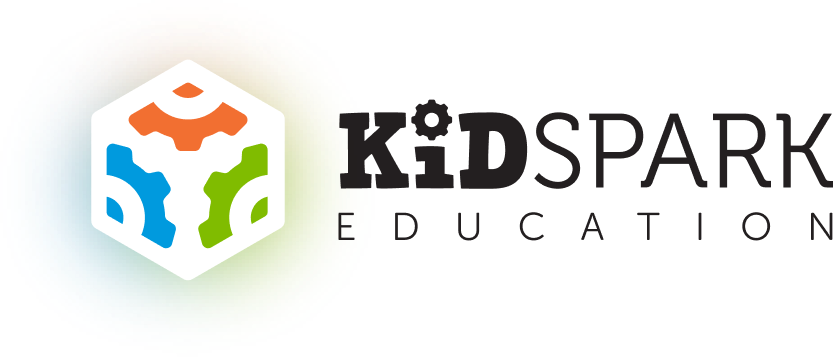

The M in STEM, Mathematics, is absolutely crucial to any school’s STEM program. Just as our programs at Kid Spark Education support engineering, technology, and science, focusing on your school’s STEM math curriculum is paramount for setting up students for success.
Learning math, along with all of the other STEM disciplines, give students the tools they need to understand and interact with the world. With this foundation, kids can learn to think critically, solve creatively, and engage fearlessly with the world around them.
Still not sure you need to focus on math in your STEM program? Here are 5 reasons to bolster your classroom’s math curriculum.
1. Mathematics Supports Engineering and Scientific Thinking
Science, Technology, Math, and Engineering are all connected and all support each other. Learning each aspect of STEM and how each of these disciplines cross-pollinate allows students to grow and have a lifetime love of learning. As the National Council of Supervisors of Mathematics and the National Council of Teachers of Mathematics find in their report on mathematics in STEM education,
“A well-designed and effective STEM program is going to have a strong mathematics component, a strong science component, and many opportunities to use mathematical and scientific thinking, reasoning, and modeling across disciplines to tackle real problems that involve any or all of the STEM fields. Thus, mathematics and science as disciplines, as well as integrative activities that cross the STEM fields, should be part of a comprehensive STEM program.”
Teaching mathematics alongside engineering and scientific thinking allows students to problem solve in deeper ways. In our labs, students apply what they’ve learned in engineering, science, and math to create solutions— whether that’s building a bridge or creating code for the Spark:Bit controller.
2. There is Still Room For Improvement for Mathematics Achievement in the US
While science and math are so often intertwined in making calculations and writing code, many students do struggle to understand and excel in mathematics. The National Science Foundation found that U.S. 15-year-olds rank higher internationally in science literacy than they do in mathematics literacy, as shown by their performance on the 2018 Program for International Student Assessment, ranking 25th among 37 OECD countries.
Introducing opportunities to learn math concepts in a more hands-on way can help reach students that are struggling with the curriculum. Many students are kinetic learners and need the opportunity to apply concepts “in real life”. At Kid Spark Education, our lessons use convergent and divergent learning to help reach every kind of learner in the classroom. Whether students learn by listening or learn by doing, our labs allow the power of STEM education to reach every child. By providing the opportunity for students to be just as excited about learning math concepts as science concepts, you can make sure that they grow in both disciplines, which will set them up for an even brighter future.
3. Teaching Students to Love Math Can Bridge the Opportunity Gap
Some students may not have the resources and opportunities at home to be able to explore and learn all about STEM. According to data collected on U.S. remote learning in spring 2020 by the National Science Foundation, students’ access to technology can vary depending on household income: only 57% of households with income below $25,000 always had a computer available for educational purposes, compared to 90% of households with an income of $200,000 or more. With students lacking this access, it’s paramount for schools to be able to provide resources for students to have the capability to learn.

At Kid Spark Education, we’re passionate about making sure every child has the opportunity to learn to think like designers and engineers. We help schools and educational service providers disrupt the pattern of educational inequity by providing STEM education early and consistently for Pre-K – 8th grade students. Our programs help teach important math, science, engineering, and technology concepts to help students prepare for the modern world.
4. Mathematics Can Teach Important Critical Thinking Skills
Whether students go on to work in mathematics related fields or in science or in engineering, mathematics education is essential for developing critical thinking skills. As the National Council of Supervisors of Mathematics and the National Council of Teachers of Mathematics also express in their report on mathematics in STEM education,
“Teaching mathematics well is an important component of a comprehensive STEM program. There is more to mathematics, however, than being part of STEM. The mathematics that students learn in school includes content and thinking that can be used as tools for tackling integrative STEM problems. But it also includes content that might be considered "just math" or might be connected to non-STEM disciplines.”
Learning skills like spatial reasoning, sequence, correspondence, symbolism, classification, and comparison all contribute to a students’ ability to solve problems creatively. Working with labs like the ones we provide will give them the skills to solve problems later in life and become leaders in our increasingly technological future.
5. Understanding Mathematics Will Help Students Prepare for a Bright Future
As the future becomes more focused on computing and cloud technology, preparing students for that future is more important than ever. Mathematics, used in so much of engineering, science, and technology, is absolutely necessary for preparing for that future. According to the Bureau of Labor Statistics, between 2017 and 2029, the number of STEM jobs will grow 8 percent—in particular with jobs in computing, engineering, and advanced manufacturing.

With our STEM Pathways Lab for 6th-8th graders in particular, students get introduced to key concepts that will prepare them for that future. Throughout the lessons, students learn structural & mechanical engineering, physics, rapid prototyping & 3D printing, computer science, and robotics. This includes being introduced to coding with Microsoft’s MakeCode programming environment and using that environment to solve problems with the Spark:bit. Learning to solve problems with all of these concepts will give students the background to love engineering and computing throughout their lives.
Want to Learn How You Can Grow Your STEM Math Curriculum?
Of course, these are just a couple reasons why math is such an important part of a strong STEM curriculum. At Kid Spark Education we’re passionate about teaching students to love every aspect of STEM through our labs. By giving kids of all backgrounds and abilities an equal chance to learn and love STEM, we are nurturing the next generation of successful professionals, bold thinkers, and passionate leaders.
If you’re ready to get started with Kid Spark Education for your afterschool programs, we’d love to talk to you further. We help schools and educational service providers disrupt the pattern of educational inequity by providing STEM education early and consistently for Pre-K – 8th grade students. To get started, purchase a plan here. If you need help with grants or other solutions to help bring the power of STEM education to your classroom, you can learn more here.

